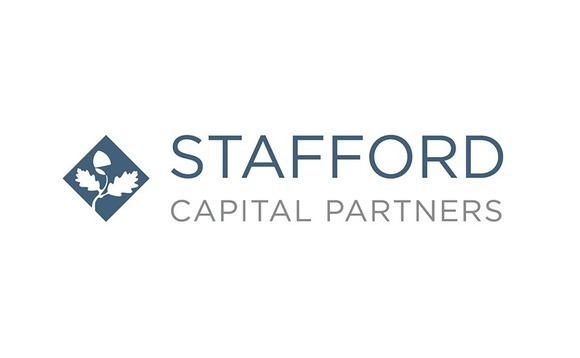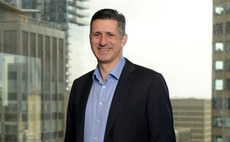
LP interview: Stafford Capital Partners

Founded in Australia, Stafford Capital Partners evolved into a global asset manager focused on timberland and infrastructure secondaries and PE co-investment. ESG is a rising client priority
Prior to embarking on a career in investment management, Daan Oranje, a managing partner at Stafford Capital Partners, worked as a forester. He has been familiar with the mechanics of carbon capture since university. Stafford, which launched a timberland investment programme in 2002, two years after its founding, was also an early mover on carbon credits. It just didn't really tell anyone.
"We've been selling carbon credits and returning revenue to our clients from carbon capture for over a decade. Most of them didn't know and we were poor in explaining what we were doing. To us, it was nothing more than monetising all the benefits of the asset class," said Oranje.
"That has largely turned on its head in the last couple of years and certainly in the last 12 months. Institutions are seeking ESG [environment, social, and governance] as an alpha or additionality to their investment case. They can do a plain vanilla data centre as an infrastructure project, or they can do a forestry project and get other benefits such as reducing overall emissions profiles."
As this choice has become more nuanced – to the point that LPs no longer look at timberland and infrastructure in the same context – Stafford's offering has evolved. Two funds, each targeting USD 1bn, are being raised in tandem: one in the traditional mould, focused on secondaries and mature projects; and another, positioned as carbon-oriented, that invests directly in greenfield plantations.
The underlying assets of the first investment from the timberland fund, Stafford's 10th, comprise an established timber-growing business with an existing cash yield of 5%. The carbon fund is currently working with a forest manager to assess the potential acquisition of marginal farming land that might be steep or erodible and may be better suited to tree plantation establishment.
Easing on Australia
It is a quirk of Stafford's business that, even though the firm was founded in Australia, the LPs that allocate to these funds are unlikely to be Australian. When the timberland strategy launched, most of the investors were Australian, but within a few years their share slipped to 50%, and now Stafford primarily serves clients based in Europe, followed by the US and Asia.
Korea's National Pension Service (NPS) is a notable recent addition, having made a first foray into timberland with a USD 150m commitment to Stafford's ninth timberland fund in 2021. NPS noted that timberland is aligned with its strategy to "enhance sustainability" in its global portfolio.
It is a similar story with infrastructure, which Stafford added to the mix in 2012. The firm is currently in the market seeking EUR 1.3bn for its fifth infrastructure fund and expects to get most traction with longstanding supporters in Europe and the US. Asia represents a growing market.
One explanation for the absence of home bias in the LP bases is the high level of sensitivity towards fees in the Australian market. Stafford accesses timberland and infrastructure through co-mingled funds with a heavy emphasis on secondaries – the secondaries-co-investment split in the timberland funds is 80-20, for infrastructure it is 70-30 at most – and the extra layer of fees could be an obstacle.
This isn't necessarily a problem. John Zaknic, a principal in the infrastructure business, observes that Australian LPs are increasingly pursuing direct deals and their deep pockets are contributing to rising valuations. Stafford likes infrastructure because it brings diversification as well as inflation linkage and a low correlation to equities. Secondaries is also thought to be effective in hot markets.
"Our strategy was born out of looking for core assets in a market that has a lot of capital looking for core assets. We acquire stakes in funds that already hold those assets, effectively winding back the clock on the vintage. We buy in at NAV [net asset value] rather than at market premiums, and then exit to a primaries market that has a lot of capital and pressure on returns," said Zaknic.
Customisation protocol
Stafford has USD 3bn in assets under management (AUM) in timberland and USD 1.8bn in infrastructure. The third strand, taking overall AUM up to nearly USD 8bn, is private markets. More than 80 investment professionals cover these asset classes, working out of an office network that has expanded from Sydney to Austin, Boston, Curitiba, Frankfurt, London, Rotterdam, Seoul, and Zurich.
The private markets operation, which primarily comprises private equity, has retained some Australian clients, but co-mingled funds are no longer a strategic priority. Two-thirds of the portfolio is in legacy fund-of-funds products; the rest is in co-investment-heavy separately managed accounts (SMAs), and this is what Stafford markets to potential clients.
"A co-mingled fund will have its place, but clients are looking for more customisation and they want to get closer to underlying company exposures. Increasingly, we are sitting down with clients and developing programmes. We have several co-investment programmes running for different clients and focused on different things," said Daniel Bowden, a private markets partner at Stafford.
At present, there are five SMA clients: two Australian superannuation funds and three US pension funds. They are tailored to meet individual needs – from co-investment only to primaries and secondaries to co-investment and secondaries. One client outsources its entire private equity programme to Stafford. Others use Stafford to fill gaps in broader portfolios.
"Even though Australia's superannuation industry is consolidating, groups are still building private equity programmes in different ways. It's a question of how they want to access the market – outsourcing, having an internal team, taking a hybrid approach," said Bowden.
Stafford has worked with GPs, as a fund investor and as a co-investor, that manage funds of USD 150m to nearly USD 1bn. The sweet spot is around USD 500m. Co-investment cheque sizes have been in the USD 5m-USD 30m range, but now the firm goes up to USD 50m. There have been 62 co-investments to date, with Australia accounting for about half of the USD 600m deployed.
Increasingly, Stafford is looking beyond its home geography, yet Bowden claims that deal access hasn't been a problem, including when working with managers where there isn't a relationship on the primaries side.
"Alignment is important," he explained. "A pre-existing fund relationship is one way of demonstrating that, but it's not the only way. For example, a manager might make a material contribution to a deal. There have also been situations where, because of the client we represent, managers have been welcoming to us as a co-investor. They see it as an opportunity to get to know the client."
The ESG angle
ESG is becoming a more significant part of the customisation process. Typically, Stafford uses the UN sustainable development goals (SDGs) as a framework when discussing approaches to ESG and sustainability with clients. Environment has long been a priority – and more so now given the proliferation of net-zero commitments – while social issues are also gaining traction with investors.
Stafford has a standardised process for addressing ESG in co-investments and looks to establish how it corresponds to client agendas. Questions often focus on how the firm tracks progress and delivers certain outcomes. Stafford filters portfolios by NAV and shows the amount assigned to individual SDGs with a view to communicating how an LP's capital is making a difference in the global economy.
Greater LP scrutiny is also impacting the infrastructure business. "We are tightening our targets with each fund," said Zaknic. "Fund V will have 0% allocations to coal and to oil and gas, and a minimum 25% in renewables. It has transitioned over time. In the early days, we would have some oil and gas."
Stafford tries to leverage synergies between the asset classes where there are areas of common interest like ESG. Bowden highlights collaboration on due diligence when co-investments touch on timberland or infrastructure and pooling knowledge with different teams regarding market trends.
Regarding climate, Oranje believes the next challenge facing institutional investors, once they have started tracking emissions and implemented initiatives aimed at lowering them, is how to get to zero. It will require significant carbon offsets or other negative emissions – and the hope is that Stafford's carbon strategy can contribute.
"It's not just about giving a carbon credit to offset pollution elsewhere; it's about offering an investment that is already carbon negative," Oranje said. "A lot of investors now have to disclose the overall carbon intensity of their portfolios and timber is the only asset class that is negative in this respect. Investors are starting to realise they get a double benefit from investing in timber."
Stafford will look to preserve this double benefit by investing in projects that offer commercial returns and carbon sequestration. Should changes in how carbon markets are regulated undermine the economics of sequestration, investors would still be able to rely on the core value of the commercial forest investment. In this context, strategies like avoided deforestation do not appeal.
Timberland might be creeping into the mainstream, but Oranje acknowledges that it remains a niche strategy with an investable universe of USD 200bn – a fraction of other asset classes. However, the limited size and high degree of specialisation are essentially a competitive moat. It is not only difficult to internalise coverage; it might also not be worthwhile from a budgeting perspective.
"There is a move towards internalising investment teams within institutions, but timberland is too small for that," he added. "We still find that by co-mingling a group of like-minded investors we can deliver scale and access."
Latest News
Asian GPs slow implementation of ESG policies - survey
Asia-based private equity firms are assigning more dedicated resources to environment, social, and governance (ESG) programmes, but policy changes have slowed in the past 12 months, in part due to concerns raised internally and by LPs, according to a...
Singapore fintech start-up LXA gets $10m seed round
New Enterprise Associates (NEA) has led a USD 10m seed round for Singapore’s LXA, a financial technology start-up launched by a former Asia senior executive at The Blackstone Group.
India's InCred announces $60m round, claims unicorn status
Indian non-bank lender InCred Financial Services said it has received INR 5bn (USD 60m) at a valuation of at least USD 1bn from unnamed investors including “a global private equity fund.”
Insight leads $50m round for Australia's Roller
Insight Partners has led a USD 50m round for Australia’s Roller, a venue management software provider specializing in family fun parks.







